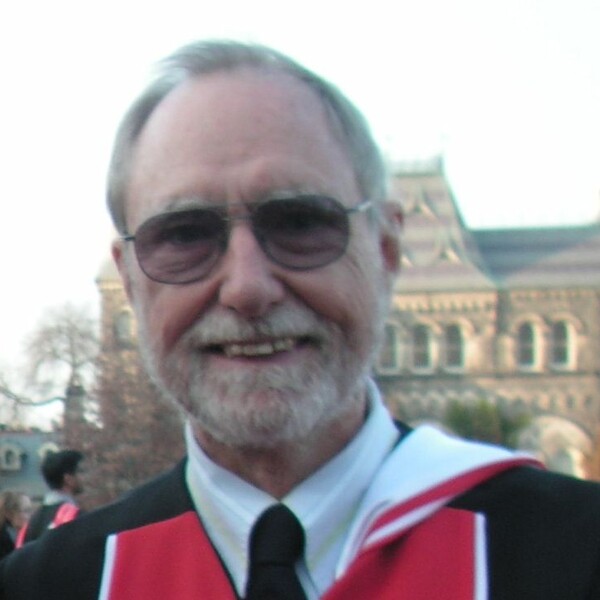Main Second Level Navigation
James Duffin

Dr. Duffin obtained a BSc in electrical engineering from the University of Toronto in 1961, and after two years of industry experience in the UK returned to Canada to obtain an MSc in biomedical engineering from the Institute of Biomedical Engineering at the University of Toronto in 1965. In 1968 Dr. Duffin obtained his PhD from the University of Toronto in the Department of Pharmacology where his thesis topic was “A Model of the Respiratory System.” After a 2-year post-doctoral fellowship in the Department of Anaesthetics at the Royal Postgraduate Medical School, Hammersmith Hospital, in the UK he returned to take an assistant professorship in the Department of Anaesthesia at the University of Toronto. His research into the control of respiration was continuously funded from the Canadian Medical Research Council/Canadian Institutes of Health Research for over 25 years, with laboratories investigating the physiology of the control of breathing and the neurophysiology of the generation of respiratory rhythm. Dr. Duffin has published over 200 papers in peer-reviewed journals, and a book entitled Physics for Anaesthetists. He is currently a Professor Emeritus in the Departments of Anaesthesia and Physiology, and a senior research scientist at Thornhill Research and the University Health Network, where his research involves the control of cerebral blood flow.
Recent Publications
- Wang D, Yee BJ, Wong KK, et al. Comparing the effect of hypercapnia and hypoxia on the electroencephalogram during wakefulness. Clinical neurophysiology 2015; 126: 103-9.
- Sobczyk O, Battisti-Charbonney A, Poublanc J, et al. Assessing cerebrovascular reactivity abnormality by comparison to a reference atlas. Journal of Cerebral Blood Flow and Metabolism 2015; 35: 213-20.
- Klein M, Minkovich L, Machina M, et al. Non-invasive measurement of cardiac output using an iterative, respiration-based method. British Journal of Anaesthesia 2015; 114: 406-13.
- Duffin J, Sobczyk O, Crawley AP, Poublanc J, Mikulis DJ, Fisher JA. The dynamics of cerebrovascular reactivity shown with transfer function analysis. NeuroImage 2015; 114: 207-16.
- Duffin J. Oxygen dissociation curves in altitude and sea-level residents. Experimental Physiology 2015; 100: 341-.
- Strohm J, Duffin J, Fisher JA. Circadian cerebrovascular reactivity to CO2. Respiratory Physiology and Neurobiology 2014; 197: 15-8.
- Sobczyk O, Battisti-Charbonney A, Fierstra J, et al. A conceptual model for CO2-induced redistribution of cerebral blood flow with experimental confirmation using BOLD MRI. NeuroImage 2014; 92: 56-68.
- Ryan CM, Battisti-Charbonney A, Sobczyk O, Duffin J, Fisher J. Normal hypercapnic cerebrovascular conductance in obstructive sleep apnea. Respiratory Physiology and Neurobiology 2014; 190: 47-53.
- Regan RE, Fisher JA, Duffin J. Factors affecting the determination of cerebrovascular reactivity. Brain and Behavior 2014; 4: 775-88.
- Fisher JA, Duffin J. From the Journal archives: Assessing the effect of anesthetic agents on the respiratory chemoreflex control of breathing. Canadian Journal of Anaesthesai 2014; 61: 664-70.
Appointments
Professor Emeritus, Departments of Anaesthesia and Physiology
Senior Scientist, Thornhill Research, University Health Network
Courses
Course Number: Physiology 1036
Course Name: